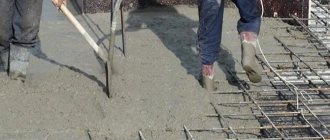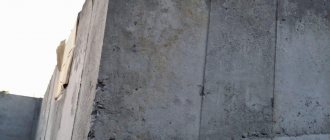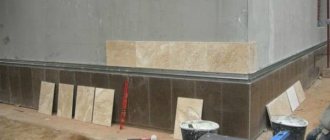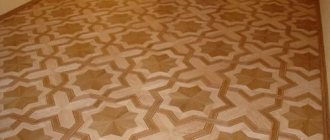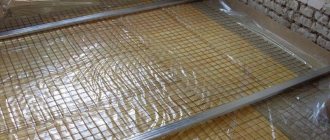Linoleum is a floor covering that has been used successfully all over the world for over a hundred years. It has a lot of undeniable advantages: simplicity of flooring, wear resistance, hygiene, ease of maintenance and, most importantly, an affordable price. With the help of linoleum, you can easily imitate any type of coating - the range of colors, designs and patterns of the material is so rich. Working with canvases is always easy and pleasant - even for a beginner who is just learning the basics of the intricacies of repair. All this allows you to lay linoleum in almost any room: in the bedroom, in the kitchen, in the hallway, in the office. However, you should not go to extremes, considering linoleum a material that really “doesn’t care at all.” This coating is quite elastic - even the smallest errors in the base can negatively affect its appearance and significantly reduce its service life. Therefore, it is very important to prepare the floor for laying linoleum efficiently. This is one of the key factors for the success of the entire process.
As a rule, almost all the problems encountered during the installation and operation of many coatings, and especially linoleum, are associated with errors in the construction of the base. In order for the flooring material to serve for a long time and delight with its aesthetics, the base must be:
- durable;
- dry;
- monolithic;
- even (no more than 2 millimeters on a base of 2 meters).
Linoleum is a universal floor covering, excellent for almost all rooms in the house, but due to its elasticity it is quite demanding on the quality of the base.
In general, linoleum can be laid on almost any surface (the main thing is that its “condition” meets all the requirements): ready-made concrete slab; screed; wooden floor; base made of chipboard, gypsum fiber board, MDF or moisture-resistant plywood; ceramic tiles or linoleum in good condition.
Preparing the floor for linoleum can be done in various ways - it all depends on the “initial data” in the room, the financial and time capabilities of the owners, etc. It is definitely impossible to say that some grounds are worse and some are better - each case is individual. It is not at all necessary to tear down the wooden floor and install a screed under the linoleum just because a neighbor did so. If the apartment already has a certain floor covering, you need to build on this.
- 2 Self-leveling screed device
- 3 Working with wooden floors
- 4 Old linoleum - to leave or not?
- 5 Ceramic tiles - a reliable option
- 6 Construction of a GVL base
Preparing the concrete surface
An absolutely flat concrete floor slab is, of course, a rare case, but not exceptional. If the area of the room “fits” within the framework of one slab and the horizontal level of the latter is satisfactory, you can limit yourself to a number of simple preparatory operations. First of all, the stove must be cleaned of dust and dirt. Then apply dispersion putty to its entire surface using a flat spatula, using a “scratching” method. The composition will fill all chips, cavities and other irregularities. As a result, you will have a perfectly flat base. If necessary, the surface can be sanded after polymerization of the putty. This is one of the simplest and most economical ways to prepare a floor for laying linoleum if you are starting a renovation, as they say, “from scratch.”
Article on the topic: Laying linoleum on a concrete floor - methods and subtleties of technology
How to calculate material consumption
To calculate the amount it will cost to lay linoleum on a concrete floor, you will need to make the following calculations:
- count the amount of linoleum;
- calculate the length of the skirting boards;
- decide on materials for leveling the base;
- find out the amount of insulating materials and fixing elements.
Preparatory activities before laying linoleum.
To find out the amount of material that will be required to level the base of the floor, you need to consider the condition of the surface. Primer and cement mixtures will be consumed depending on the square footage of the room. When making calculations, you must remember that the screed can be made 3 cm high. To prime the surface, one finishing layer is enough.
The quantity of roll materials is also calculated based on the quadrature. The number of joints during installation should be as small as possible. In some places the material will have to be cut to the shape of recesses or protrusions. In this case, you should not use fragments from the resulting waste; it is better to cut a piece from the main fabric. All joints must be carefully taped with masking tape.
When calculating the amount of linoleum required for installation, you need to take into account the standard width of the rolls. It’s good when it is larger than the width of the room. This will reduce residue and result in a coating that looks uniform. If you cannot do without joints, it is better to place the canvases in such a way that their lengths are as short as possible. To do this, laying the canvas must be done parallel to the shorter wall of the room.
Self-leveling screed device
To quickly create a high-quality, durable, monolithic base for linoleum, self-leveling mixtures are often used. They are easy to use and after drying do not require any additional processing.
The self-leveling mixture will help you quickly and easily form a strong and reliable base for laying linoleum - even a beginner can work with such a solution
When choosing this method, proceed as follows:
- Fill large holes and depressions in the concrete surface with a fast-hardening filling compound to roughly level the substrate.
- Prime the surface with a roller in two or three layers (mutually perpendicular).
- Prepare the self-leveling mixture according to the manufacturer's instructions. Mixing the mixture should be thorough, but not for long. As a result, you will get a homogeneous mass with the consistency of liquid dough. Pause for 2-3 minutes, necessary for a series of chemical reactions to occur in the solution, and stir it again.
- Pour the composition onto the primed surface and distribute it evenly using a squeegee - a notched spatula.
- Go over the formed layer with a needle roller - this will help to completely remove air bubbles from it.
- Wait until the mixture has completely crystallized (usually a day is enough) and you can safely proceed to further work on laying linoleum.
Rating of the best brands
For concrete, cement-sand bases, concrete tiles, the best grades of soil in terms of price and quality ratio are:
- Eskaro Aquastop Professional;
- "Optimist G 103";
- Ceresit CT 17.
Eskaro Aquastop Professional is a concentrated solution (1:10). Purpose – leveling and strengthening the concrete base due to deep impregnation of the top layer (from 6 to 10 millimeters).
Advantages:
- dries quickly (2-6 hours at t=20 degrees);
- economical (applied in 1 layer);
- increases the strength of concrete;
- prevents dusting;
- without smell.
Flaws:
- high price;
- cannot be used at temperatures below 15 degrees Celsius.
“Optimist G 103” is a deep penetration acrylic primer.
Pros:
- high drying speed (0.5-2 hours);
- efficiency (maximum consumption - no more than 0.25 liters per square meter);
- affordable price;
- resistance to fungal infection.
Disadvantage: unpleasant smell.
Ceresit CT 17 is a ready-made water-dispersed primer that does not require dilution.
Advantages of the composition:
- impregnation of the concrete base up to 10 millimeters;
- drying for 4-6 hours at t=20 degrees;
- consumption - from 0.1 to 0.2 liters per square meter.
Disadvantages in comparison with other mixtures:
- high price;
- toxic smell.
Alkyd primer-impregnation Belinka Base provides the best leveling and protection of wooden flooring from biodestruction.
Advantages:
- processing depth – 10-15 millimeters;
- protects against all types of tree pests;
- affordable price.
See also
Features of silicone paints and consumption, how to apply and do it yourself
Flaws:
- Drying time – 24 hours;
- toxic smell.
The choice of processing agent is determined by specific operating conditions.
Working with wood floors
Wooden flooring is also a good option for a base under linoleum. Is it difficult to prepare it? It all depends on what state it is in at the moment. First of all, a wooden floor should be inspected for mold; if there is one, it is better to tear off the boards and think about installing a screed. If no fungus-affected areas are found, you need to check whether all elements are well secured and, if necessary, strengthen the structure. All protruding heads of nails, screws, etc. must be eliminated. Individual bulges of the material itself can be removed with a plane. The cracks should be filled and sanded after drying.
If the floor is very uneven, with numerous large flaws, the only correct solution would be to lay plywood on it, and only then proceed with the installation of the finishing coating.
Plywood is an easy-to-use, inexpensive material that can compensate for all the shortcomings of a problematic wooden floor and become a good base for linoleum covering
Article on the topic: Laying linoleum on a wooden floor - nuances of the work
What can you lay linoleum on: types of substrates
As you probably know, underlayment is a thin layer between the floor and linoleum. It can dampen sound, help control moisture, and even make hard floors more springy. There are quite a few types of substrates. To avoid confusion, we will consider the most common types of bases based on the material of manufacture.
Foam (foamed polyethylene)
Foamed polyethylene is very often used for laying laminate flooring.
One of the most budget options. It has heat and sound insulation properties. This is a dense porous synthetic base with a thickness of 3 to 10 mm. The main disadvantage is low wear resistance. Such a substrate is short-lived and loses its properties over time.
Extruded polystyrene foam
In fact, “Penoplex” is not the name of the material, but a trademark
Extruded polystyrene foam is known to many under the name “Penoplex”. It is made of dense sheets of artificial material. This substrate has high density, wear resistance and resistance to moisture.
Felt
This is a natural wool-based material
Felt is the best option for sound absorption. This substrate is denser than foam, so it suppresses sounds better. The felt is very warm, but at the same time quite thin. For additional cushioning, it is better to choose a different material.
Cork
Cork is an environmentally friendly wood-based material
Natural cork underlay will help make the floor softer and warmer. In addition, this material is resistant to mold and mildew, making it suitable for wet areas.
Chipboard
Chipboard stands for particle board
Chipboard is a solid sheet of pressed wood chips. This is an inexpensive, but very fragile material. Chipboard cannot be laid in places with high humidity, since they literally crumble when exposed to moisture.
OSB
To increase strength, chips in OSB boards are compressed and located in different directions
OSB is an abbreviation for “orient strand board”, which means oriented strand board. It, like chipboard, is made from wood chips, but using a different technology. The material is easy to work with, but due to its hardness it can break when bent. It tolerates moisture better than chipboard.
GVL
The abbreviation GVL stands for gypsum fiber sheet
GVL is a universal material that is perfect for flooring in any room. Moisture and fire resistant. Using this material you can level the floor surface and protect it from moisture penetration.
Underlay classes
To make sure your substrate has the properties you need, pay attention to the product grade:
- STC. The higher this number, the more ambient noise (such as conversations and music) your underlay will absorb.
- IIC. As with STC, the higher the number, the better the sound absorption coating. However, this number indicates the ability to absorb impact sounds such as footsteps.
- R. Shows the thermal insulation class. The higher this number, the less heat transfer from the substrate (hence, it is warmer).
Old linoleum - to leave or not?
Are the floors in your home covered with old linoleum? Don't rush to tear it down. After all, this material can be an excellent substrate for new canvases. True, only if it holds firmly and has no deformations, unevenness, torn areas or other defects. Everything is fine? This means you can begin laying the new coating. Before starting work, thoroughly clean and degrease the surface, and feel free to get down to business.
Laying linoleum on an old PVC coating is only possible if its integrity is preserved and there is 100% contact with the base
Article on the topic: Is it possible to lay linoleum on linoleum - solving the dilemma
Coating features
Linoleum has been known for several decades, and still does not lose its popularity. Manufacturers are constantly working on the quality of the product to increase its service life and give it a modern appearance.
What's your favorite color? Regardless of the shade, there is a good chance that you will find linoleum in the right shade. There are many styles and textures to suit every taste. Modern coatings qualitatively imitate wood, stone, paving stones and even metal, without losing the main advantages: low thermal conductivity and ease of installation.
In some cases, neglecting the linoleum underlay is a big mistake.
Linoleum usually consists of several layers (you can read more about its structure in our other article). However, this does not mean that you will not need a backing. For example, if there are cracks or damage on the floor, over time they may show through the coating laid without an additional layer.
Let's take a closer look at what functions the linoleum backing performs.
Plywood
But what is most often laid under linoleum on a leveled concrete floor is plywood. This type of slab has a number of advantages:
- Environmental friendliness. Softwood sheets and natural resin for joining are a suitable option for a residential building. The natural composition and hypoallergenic nature of the materials allow them to be laid in any room.
- Perfectly flat surface. The production technology allows us to obtain truly sheet material that does not have roughness.
The plywood layer is multifunctional
- Low price. Using plywood over screed will save money.
Important. For the durability of the structure, high strength is needed, so craftsmen do not advise laying the thinnest models of plywood sheets.
Laying plywood underlay
Laying plywood on a concrete screed is a job that even a person without experience can handle. The main thing is to follow the step-by-step instructions:
- Surface preparation. All tools, debris, and dust are removed from the surface of the base. It is also recommended to additionally treat everything with primers for better adhesion.
- Preparation of materials. The plywood sheet needs to be cut into squares of the same size, then they need to be laid out in the room, taking into account the displacement of the seams. Cut special pieces for places where you can’t put squares.
Advice. After “trying on”, it is better to number all the plywood boards so that the process of re-laying does not turn into putting together puzzles.
- Preparation of the adhesive composition for fixing the layer. The glue and water must be mixed strictly according to the proportions indicated on the package.
- Laying. From the far corner of the room, pre-cut plywood boards are laid with the unsanded side down. The thickness of the seams between them should be about 2 mm. The glue is applied using a notched trowel.
Method of laying a plywood base with square elements
After completing the laying work, all that remains is to seal the seams. The surface is ready for laying an additional substrate, or for laying linoleum.

